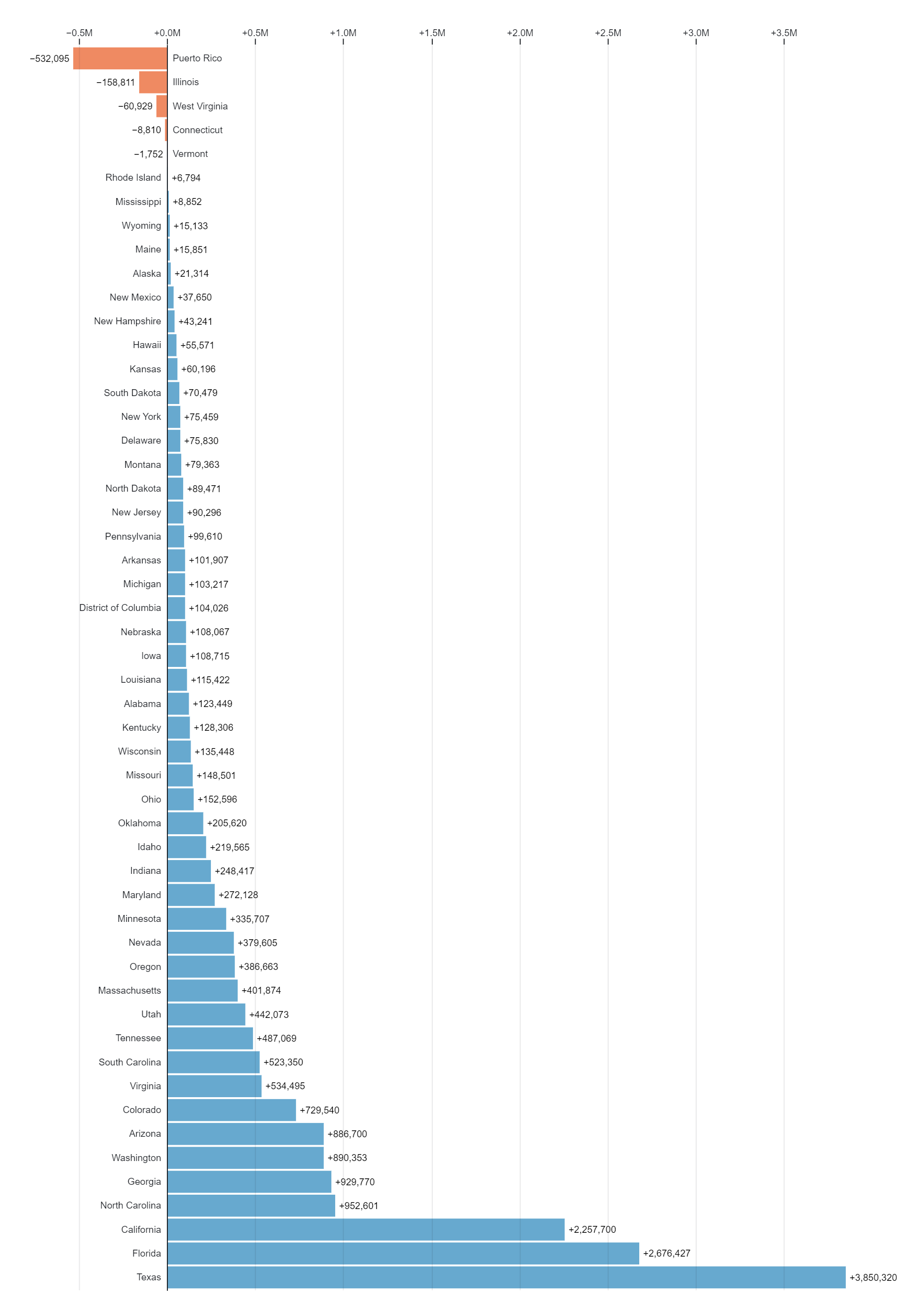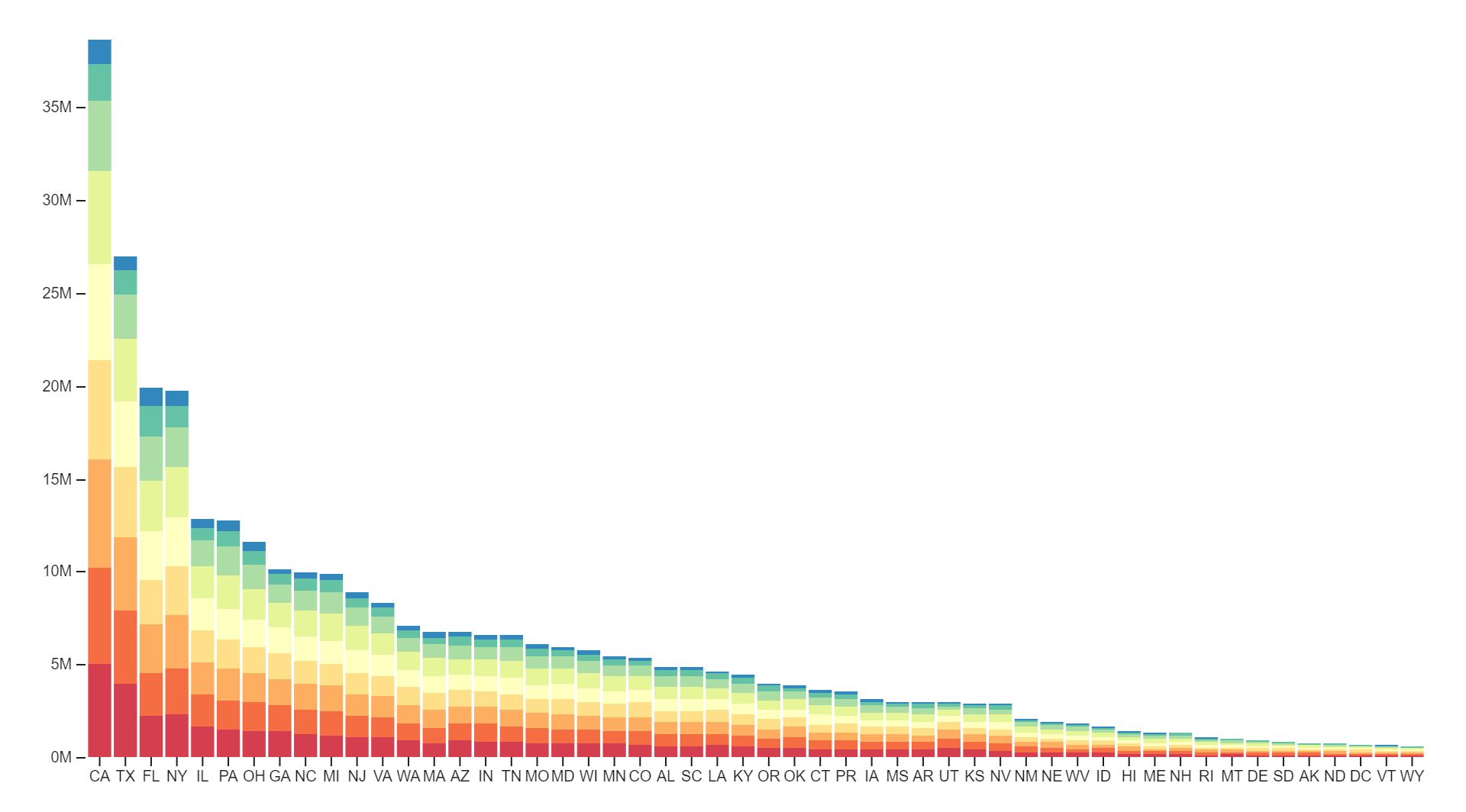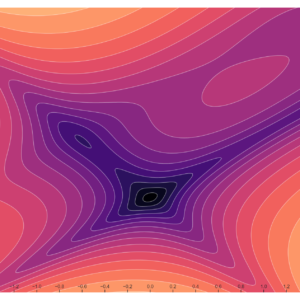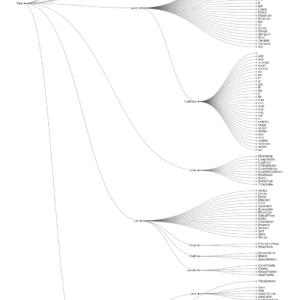Description
A stacked bar chart is a graphical representation of data that uses horizontal or vertical bars to display multiple data series. Each bar is divided into segments or layers, with each segment representing a different category or subgroup within the data series. The height or length of each segment corresponds to the value it represents, and the total height or length of the bar represents the total value of the data series. Stacked bar charts are useful for showing both the total and relative contributions of different categories to the overall total, making it easy to compare the composition of multiple data series.
Purposes :
Stacked bar charts serve several important purposes in data visualization:
- Comparing Total Values: Stacked bar charts allow viewers to compare the total values of multiple data series. By stacking segments of bars on top of each other, the total height (or length) of each bar represents the combined total of all data series, making it easy to compare overall quantities.
- Analyzing Composition: These charts help in analyzing the composition of each data series by showing the relative contributions of different categories or subgroups. Each segment within a bar represents a category, and its height (or length) indicates the proportion of the total value contributed by that category.
- Visualizing Trends Over Time: Stacked bar charts can be used to visualize trends over time for multiple categories or subgroups. By stacking bars representing different time periods, viewers can observe changes in the composition of data series over time and identify shifting trends.
- Highlighting Patterns: Stacked bar charts highlight patterns and relationships between different categories within data series. They make it easy to see which categories contribute the most to the total value and identify any significant variations or outliers.
- Comparing Distribution: Stacked bar charts facilitate comparison of the distribution of values across different categories or subgroups within each data series. Viewers can visually compare the proportions of each category across multiple bars to understand how distributions vary between different datasets.
- Communicating Complex Data: Stacked bar charts provide a concise and visually appealing way to communicate complex data relationships. They help convey information about the composition and distribution of multiple data series in a clear and intuitive manner.
- Supporting Decision-Making: Stacked bar charts assist in decision-making by providing insights into the relative importance of different categories within data series. Decision-makers can use the information presented in the charts to identify areas of focus or prioritize actions based on the contributions of various categories.
Overall, stacked bar charts are a versatile tool in data visualization, suitable for analyzing composition, comparing total values, visualizing trends, highlighting patterns, and communicating complex data relationships.
Uses :
Stacked bar charts have various uses in data visualization across different fields:
- Composition Analysis: Stacked bar charts are commonly used to analyze the composition of data sets. They visually represent the parts that make up the whole, making it easy to see the contribution of each category or subgroup to the total value.
- Comparing Total Values: Stacked bar charts enable comparisons of total values across multiple categories or groups. They allow viewers to quickly identify which categories contribute the most or least to the total, aiding in decision-making and prioritization.
- Visualizing Trends Over Time: When used to represent time-series data, stacked bar charts can show how the composition of data changes over time. This helps in identifying trends, patterns, and shifts in the distribution of values.
- Highlighting Patterns and Relationships: Stacked bar charts help highlight patterns and relationships between different categories within data sets. They make it easy to compare the distribution of values across categories, revealing insights into the data structure.
- Comparing Distribution: Stacked bar charts facilitate comparisons of the distribution of values across different categories or subgroups within each data series. Viewers can assess how the proportions of each category vary across multiple data sets.
- Communicating Complex Data: Stacked bar charts provide a concise and intuitive way to communicate complex data relationships. They simplify the presentation of information about the composition and distribution of data sets, making it easier for viewers to understand.
- Decision Support: Stacked bar charts assist in decision-making by providing insights into the relative importance of different categories within data sets. Decision-makers can use the information presented in the charts to prioritize actions or allocate resources effectively.
Overall, stacked bar charts are a versatile visualization tool that can be used to analyze composition, compare values, visualize trends, highlight patterns, and support decision-making across various domains.
Only logged in customers who have purchased this product may leave a review.
Related products
-
- Sale!
Q-Q Plot
-
$ 15Original price was: $ 15.$ 10Current price is: $ 10. - Add to cart
-
- Sale!
Contours
-
$ 15Original price was: $ 15.$ 10Current price is: $ 10. - Add to cart
-
- Sale!
Clustre Dendogram
-
$ 15Original price was: $ 15.$ 10Current price is: $ 10. - Add to cart







Reviews
There are no reviews yet.